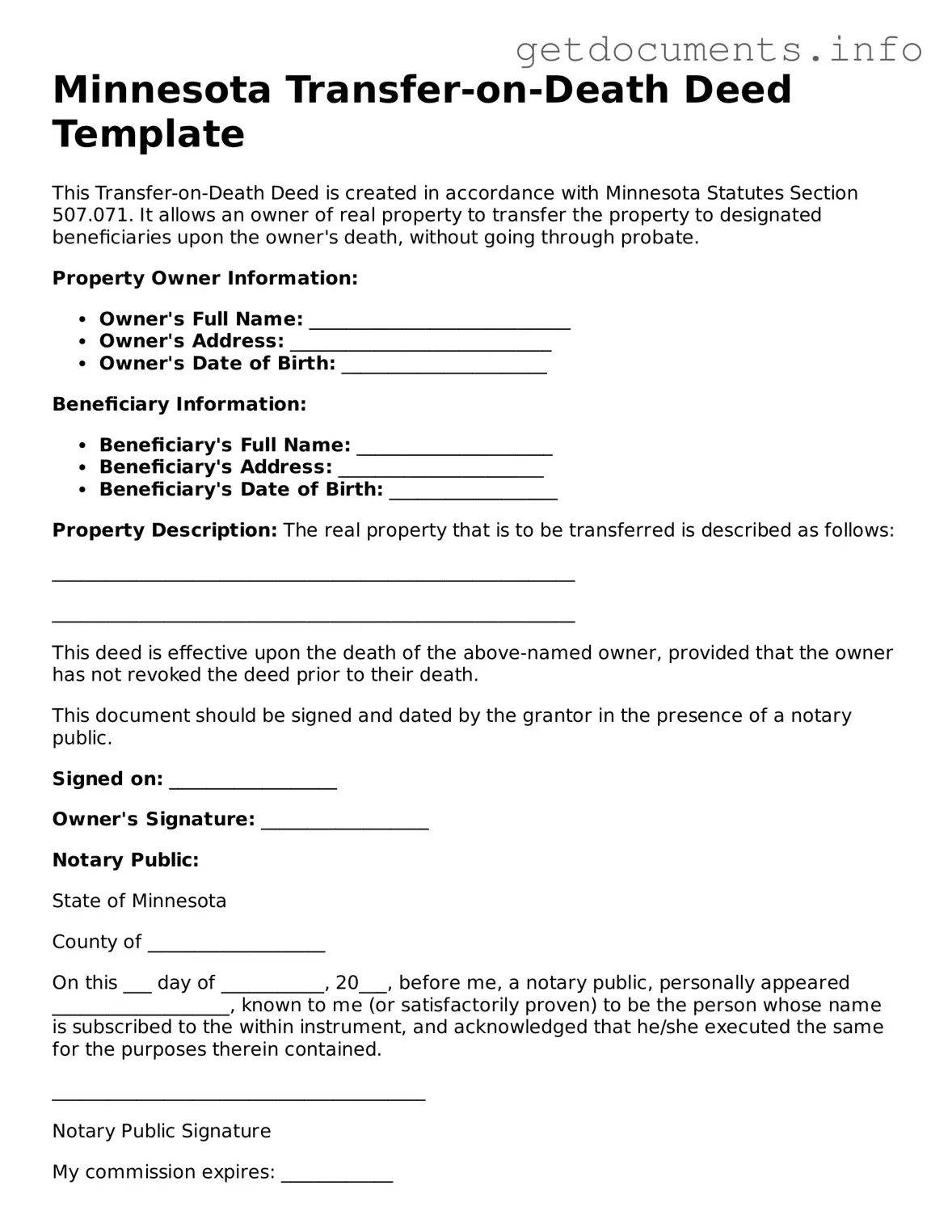Free Transfer-on-Death Deed Template for Minnesota
The Minnesota Transfer-on-Death Deed form allows property owners to transfer real estate to designated beneficiaries upon their death, bypassing the probate process. This legal tool provides a straightforward way to ensure that your property goes directly to your heirs without unnecessary delays or costs. For those looking to secure their estate, filling out this form is a crucial step—click the button below to get started.
Access Transfer-on-Death Deed Editor
